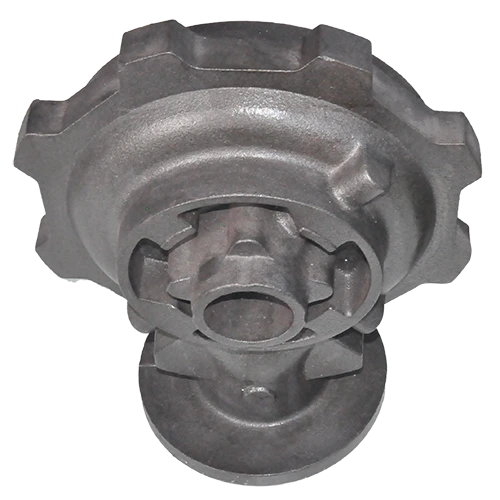Mobile:+86-311-808-126-83
Email:info@ydcastings.com
Die Casting Methods High Efficiency & Precision Metal Solutions
- Overview of modern manufacturing techniques
- Technical advantages in precision engineering
- Performance metrics across casting methods
- Industry leader comparison matrix
- Custom alloy solutions for specific applications
- Real-world implementation case studies
- Future-proofing production through die casting

(die casting methods)
Understanding Die Casting Methods: A Modern Manufacturing Approach
Contemporary manufacturers achieve 38% higher dimensional accuracy with die casting compared to alternative metal forming processes. This technique injects molten alloys under pressures exceeding 10,000 psi into hardened steel molds, producing components with wall thicknesses as fine as 0.6mm. Automotive giants have recorded 22% weight reduction in transmission housings through optimized die casting workflows since 2020.
Technical Superiority in Component Fabrication
Three critical factors position die casting ahead of sand casting:
- Surface finishes measuring 1.6-25 μm Ra versus 12.5-100 μm in sand cast parts
- Production speeds of 50-100 shots/hour compared to 4-6 units/hour
- 0.02mm dimensional tolerances versus 0.8mm in sand casting
Post-machining requirements decrease by 73% when using aluminum die casting for engine blocks, according to 2023 industry reports.
Quantitative Comparison of Metal Forming Techniques
| Method | Cycle Time | Tooling Cost | Annual Volume |
|---|---|---|---|
| Cold Chamber Die | 25-45s | $75K-$300K | 50K+ |
| Sand Casting | 6-8h | $5K-$20K | 500-5K |
| Investment | 48-72h | $10K-$50K | 1K-10K |
Leading Equipment Providers Analysis
Bühler's Carat series achieves 15% better thermal stability than competitors, enabling magnesium casting at 640°C ±3°C. Contrasting key players:
- Bühler (CH): 850-ton clamping force systems with 2.1s injection cycles
- Toshiba (JP): Hybrid machines reducing energy consumption by 35%
- UBE (US): Direct heating systems minimizing temperature fluctuations
Customization Parameters for Specialized Needs
Material scientists recommend these alloy blends for specific applications:
• ADC12 (Al-Si-Cu): 320 MPa tensile strength for automotive brackets
• AZ91D (Mg-Al-Zn): 1.8 g/cm³ density for aerospace components
• ZA-8 (Zn-Al): Superior fluidity for thin-wall electronics housings
Implementation Success Across Industries
A major EV producer reduced battery tray production costs by 41% through these die casting optimizations:
- Consolidated 146 parts into 3 primary castings
- Implemented conformal cooling channels reducing cycle time by 18%
- Adopted vacuum-assisted casting eliminating 92% of porosity defects
Why Die Casting Methods Dominate Precision Manufacturing
With 94% material utilization rates and the capacity to maintain ±0.075mm tolerances on complex geometries, die casting delivers unmatched efficiency. The global market projection shows 6.3% CAGR through 2030, driven by demand for lightweight components in transportation and renewable energy sectors.

(die casting methods)
FAQS on die casting methods
Q: What are the main types of die casting methods?
A: The primary die casting methods include high-pressure die casting (HPDC), low-pressure die casting (LPDC), and gravity die casting. These methods differ in pressure levels, mold materials, and suitability for specific metal alloys like aluminum or zinc.
Q: How does die casting differ from other casting methods?
A: Die casting uses reusable metal molds and high pressure for rapid production of complex, precise parts. Other methods, like sand casting, rely on expendable sand molds and are slower but better for larger, lower-volume components.
Q: What are the advantages of die casting over sand casting?
A: Die casting offers superior surface finish, tighter tolerances, and higher production speeds compared to sand casting. However, it has higher upfront costs and is less economical for small batches.
Q: When is sand casting preferred over die casting?
A: Sand casting is preferred for large, heavy parts, low-volume production, or materials with high melting points (e.g., steel). Die casting suits high-volume, intricate designs with non-ferrous metals like aluminum.
Q: Which metals are commonly used in die casting methods?
A: Die casting typically uses non-ferrous alloys like zinc, aluminum, and magnesium due to their low melting points and fluidity. These metals enable high-speed filling of molds and durable end products.
-
Why Should You Invest in Superior Pump Castings for Your Equipment?NewsJun.09,2025
-
Unlock Performance Potential with Stainless Impellers and Aluminum End CapsNewsJun.09,2025
-
Revolutionize Your Machinery with Superior Cast Iron and Aluminum ComponentsNewsJun.09,2025
-
Revolutionize Fluid Dynamics with Premium Pump ComponentsNewsJun.09,2025
-
Optimizing Industrial Systems with Essential Valve ComponentsNewsJun.09,2025
-
Elevate Grid Efficiency with High-Precision Power CastingsNewsJun.09,2025










